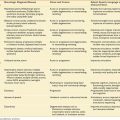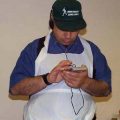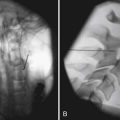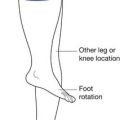Chapter 61 International Physical Medicine and Rehabilitation
The number of PM&R physicians is large and growing globally. The International Society of Physical and Rehabilitation Medicine (ISPRM) reported 47 national societies of physical and rehabilitation medicine (PRM) as constituent members in 2006.47 The Fifth International Congress of Physical and Rehabilitation Medicine in 2009 at Istanbul had almost 3000 attendees.
PM&R has gone global because of three basic influences: the universal presence of conditions causing disability, existence of PM&R specialists worldwide, and the use of effective and efficient communication techniques.37 This globalization provides benefits to PM&R specialists in the United States and throughout the world. It also creates the need to develop consensus or accommodation when different groups approach specialty issues differently. For example, differences in terminology related to the specialty have developed between PM&R specialists internationally and those in the United States.
Another issue related to terminology is to what extent authors and speakers use the specific definitions included in the International Classification of Functioning, Disability, and Health (ICF) published by the World Health Organization (WHO).54 Terms defined specifically by the ICF include health condition, functioning, activity, participation, environmental factors, and personal factors. Some of these definitions differ from those commonly used in the United States. One example is the term disability, which the ICF defines as an umbrella term to designate the existence of any impairments, activity limitations, or participation restrictions.54 The international authors of this chapter refer to the specialty as PRM and use the ICF terms as published by the WHO.
Brief History of International Physical Medicine and Rehabilitation Organizations
International cultural exchange, interaction, and cooperation are not new events. Throughout history, there have always been communal and cross-border efforts in the development of science and “finding the cause.” As far back as the Babylonian civilization, physicians were travelers spreading their knowledge for a fee and publishing medical texts.32 In the Hellenic civilization, learning and knowledge development were based on schools in which foreign physicians and medical students mixed with the locals to create an international learning environment.33 Some of these schools also promoted the itinerant physician (periodeute), who traveled with what today would be considered a “team” formed by assistants, students, and midwives. This group not only treated patients but also gave lectures to the local students.
Pre-1950 International Physical Medicine
It is well known that many different physical agents have been used throughout history for therapeutic purposes. The first international congress of one of these agents, hydroclimatology, was held in 1886.30 Sidney Licht stated that six international congresses of what today is known as “physical medicine” were held between 1905 and 1936.29 Licht acknowledged his indebtedness in the compilation of this material to an international group including Drs. P. Bauwens of London, P. Farneti of Milan, J. Gunzburg of Antwerp, J. Michez of Brussels, and J. van Breemen of Amsterdam. It is not surprising that the term physiotherapy was used for the designation of most of these early congresses. This is because during the first and second decades of the twentieth century, physicians who used physical agents for diagnostic and therapeutic procedures were recognized under multiple names: electrotherapist, hydrologist, physical therapeutist, physiotherapist, and physiotherapy physicians. In some instances they were also included under the broad term of radiologist. The expression “physical medicine” was first used by the London Hospital in England in 1921.2,29,30 In the United States, the official recognition of the term physical medicine as a specialty with an independent board took place in 1947, thanks to the efforts of a group of physicians led by Dr. Frank Krusen.2,38 It was at the sixth and last of these early international congresses that the name physical medicine was first used as a Congress designation.1,30,49 This occurred largely because this congress was organized by L’Association Internationale de Médicine Physique et de Physiothérapy (which was founded in Liége in 1930 and disappeared during World War II) (personal communication, Mail Information Office of the Archives of Physical Medicine and Rehabilitation, September 2, 2009).
International Federation of Physical Medicine
The First International Congress of the IFPM was held at King’s College in London on July 13 to 18, 1952. This congress was attended by more than 200 physicians representing 23 countries.16,29 At the time of the Fourth Congress (Paris, 1964) it was resolved to apply for membership as an affiliate of the WHO to better fulfill the objectives of the organization. The application was approved, and the Federation then began a close working relationship with the Rehabilitation Offices of WHO. The name of the Federation was changed in 1972 to the International Federation of Physical Medicine and Rehabilitation (IFPM&R).
International Rehabilitation Medicine Association
According to Dr. H. J. Flax, the International Rehabilitation Medicine Association (IRMA) was Dr. Sidney Licht’s idea and was founded in 1968. Dr. Licht wanted “to establish an international forum where physicians from countries that had not yet recognized the specialty of Physical Medicine and Rehabilitation as well as physicians from other specialties who utilized physical modalities or were interested in Rehabilitation, could meet and discuss their work.”8 To achieve this aim, in November 1968, an international committee was formed that included Dr. Christopher B. Wynn Parry, Dr. J. Poal, Dr. W. J. Erdman II, and Dr. S. Licht. It was decided that membership in the association would be offered exclusively “to doctors of medicine (physicians and/or surgeons), who are members of a national medical society of their country of residence or citizenship.” The committee of four invited the Società Italiana di Medicina Fisica e Rehabilitazioni to hold the first world congress (IRMA I) in Milan on September 20, 1970. During its life, IRMA focused not only on scientific matters but also on communication. IRMA fostered liaisons with other rehabilitation organizations, adopted the Journal of Disability and Rehabilitation, and produced several monographs to achieve its mission of broadening the professional competence of its members.
International Society of Physical and Rehabilitation Medicine
Since the creation of IRMA in 1968, there always was some liaison between it and the already existing IFPM&R.17 During a meeting in Dresden in 1992, it was resolved to explore the possibility of merging the two societies. As noted above, an international task force was created, including John Melvin (United States), Robert Oakeshott (Australia), and Jose Jimenez (Canada) representing IFPM&R and Martin Grabois (United States), Satoshi Ueda (Japan), and Ashok Muzumdar (Canada) representing IRMA. John Melvin was elected Chair. This group worked out an agreement that included:
Dr. John Melvin was installed in 1999 as the first president of the ISPRM. The mission of the ISPRM was and continues to be as outlined in Box 61-1.
BOX 61-1 Mission of the International Society of Physical and Rehabilitation Medicine
The activities of the ISPRM in its short 10-year history have increased greatly. Congress attendance has averaged more than 1500 registrants, with plenary sessions, courses, workshops, meetings with the experts, daily poster sessions, and six to eight simultaneous free paper presentations. News and Views is now published monthly; there is online availability of the Journal of Rehabilitation Medicine; and there is an ongoing relationship with the Journal of Disability. The ISPRM website (www.isprm.org) now provides visitors with a detailed history and evolution of ISPRM, as well as continuing coverage of its activities. ISPRM has also facilitated an increasing exchange of experts and education with WHO Committees.
Education in Physical Medicine and Rehabilitation: International Perspectives—Challenges and Opportunities for Mutual Growth
Members of the Physical and Rehabilitation Medicine Section of the Board of the European Union of Medical Specialists (UEMS) have created the European standards of competence in PRM. The White Book on Physical and Rehabilitation Medicine in Europe contains a clear and detailed list of the topics that should be covered as a minimum requirement for any education and training program in the specialty within the European countries affiliated with the European Union.13 The White Book is a unique and realistic attempt to promote standards of education for practitioners of different backgrounds, languages, and cultures. The program content is divided into 15 chapters, under two major sections. The first section has four chapters, including the fundamentals of PRM, physiology and basic physiopathology, clinical and functional assessment in PRM, and therapies in PRM. The second section includes topics relating to the application of PRM to specific pathologies and health conditions: the immobile patient; adult locomotor system; sports, nervous system, respiratory, cardiovascular, pediatric, urologic, and sexual problems; geriatrics; oncologic rehabilitation; and reintegration and maintenance of disabled and elderly people at home.13 The standardized training course is described in detail to facilitate the development of common standards of training. Despite different laws and national traditions, physicians certified in PRM by their national training authorities are eligible to be recognized by the European Board of PRM.
Once certified these specialists have the ability to move freely across UEMS member states and practice PRM in different countries. The White Book also includes a list of national delegates from each country.13 The unified education program under the UEMS provides a mechanism responsible for recognition of teachers and training institutions, as well as monitoring and guaranteeing quality assurance of the training sites. Another important step is the recognition of a single annual written certifying examination given throughout Europe, as well as standard rules for the accreditation of trainees and for the process of certification.
A unified continuing medical education (CME) system also consolidates the revalidation of practitioner certification into 10 yearly intervals. CME credits are provided for participation in scientific events, presentation of scientific work, publications, academic, and self-education activities. An extraordinary effort is made to promote the accreditation of international congresses and events in Europe. The program was developed based on the mutual agreement signed between the UEMS European Accreditation Council of CME and the UEMS-PRM Section and Board. A special committee is responsible for continuing programs within the specialty, for the accreditation of the several scientific events in Europe, and for the scientific status of board-certified PRM specialists.13
Specialized medical knowledge is only part of the core competencies required for residency programs by the Accreditation Council on Graduate Medical Education (the governing body that accredits residency programs in the United States). A competent specialized physician should demonstrate the six core competencies as outlined in Box 61-2. The main goals of the core competencies are for practitioners to develop the ability to care for patients and to work effectively in health care delivery systems.48 The curricula developed by the American Board of Physical Medicine and Rehabilitation (a constituent member of the American Board of Medical Specialties) are implemented in all American programs, including those in Puerto Rico. Residency programs of all specialties are now required to develop and implement education strategies to meet these six core competencies.
BOX 61-2 The Six Core Competencies According to Swing
Interpersonal and communication skills
Educational objectives are developed for each major PM&R content area, including use of evidence-based guidelines and evidence-based decision-making process, technology, continuous quality improvement, and team leadership. The current recommended curricula foster the development of the individual practitioner in mastering specific competencies, appropriate skills, attitudes, and clinical responsibilities while working within a multidisciplinary team structure that also includes patients, families, and community resources. The recommendations include suggestions about program duration, as well as learning resources including textbooks and updated related literature.15
The complexity of current educational requirements requires that program directors identify and quickly incorporate changes in areas that need improvement. The current challenge is to develop a standardized core curriculum that successfully educates and evaluates PMR residents in the core competencies at the international level. Although a minimum curriculum is made available to facilitate the education of well-trained and competent specialists, the structure of each program should be tailored to its own environment, resources, and needs. Much of the retrieved literature on the topic has already been integrated into current residency programs worldwide. For example, a detailed and comprehensive curriculum has been described by the Australasian Faculty of Rehabilitation Medicine in terms of tasks, knowledge, and suggested learning resources. The curricula used in teaching programs at the University of Toronto and in the United States also address the skills and attitudes that should be obtained. Some curricula suggest the duration of each program, including recommendations for advanced longer training programs.
Focused effort is needed to develop and implement educational standards in different countries.19 The PRM curricula currently used in most countries in Latin American, Middle Eastern, and Asian regions, for example, only outline the general concepts and topics that should be covered in each residency year or major topic rotation. At the time of this writing there are no commonly agreed-on educational standards in most of the countries in those regions. Despite using evidence-based guidelines and evidence-based decision-making processes, most programs still use their own independent systems of training and evaluations. Content is usually determined by what the services can and are willing to offer rather than on the residents’ global need to better care for their patients. A plausible solution used in some countries is to promote collaboration with and resident rotations to different rehabilitation services to provide overall and comprehensive program content. The time designated to each mandatory rotation depends on the length of each residency program, which at this time differs from country to country. Most curricula specify the amount of time spent in each rotation and the major topics to be covered, as opposed to the essential competencies and skills to be acquired during the education and training process.
Opportunities to Include Physical Medicine and Rehabilitation in the Medical School Curriculum
A series of publications appeared in the past 3 decades citing the importance of the development and implementation of PRM curriculum in medical schools, specifically in the United States∗ but also in other countries such as United Kingdom,20,31,42 Australia,5 Croatia,51 Iran,39 France,40 and Germany.12,24,35,36,43 In 2003, the Federal Medical Licensing Regulations in Germany included rehabilitation, physical medicine, and naturopathic treatment as compulsory parts of the medical curricula.24,43
Currently in most parts of the world there is a progressive and exponential increase of the elderly population and in the incidence of disability.5,34 Those who now survive severe medical conditions, major trauma, or disasters as a result of better overall medical care are typically in need of rehabilitation expertise. Despite this, it is striking to note that medical students typically lack even basic knowledge and competence to assess some of the crucial needs of elderly patients and also to provide the proper assistive device prescription.41
Some guidance and detailed recommendations for undergraduate curricula in PMR are already available in the literature.7,35 Major educational goals include an understanding of the concepts of disability, impairment, and handicap. In 2001 the WHO introduced the concept of the ICF, which should fit with the International Classification of Diseases.46
Designing and implementing the optimal format for rehabilitation education of medical students is critically important. It has been recently recognized that a format of passive traditional education is not as effective as team-based learning (TBL). As a team-based specialty, we can provide the TBL that offers the additional benefit of preparing medical students to be capable of working in collaborative teams. TBL improves retention of information and learning outcomes. TBL focuses on student’s active learning. TBL also helps students to develop problem-solving skills through intensive communication, interaction, discussions, and the reflective participation of all team members. A comprehensive teaching program that integrates conventional lectures, problem-based learning, problem-oriented learning, bedside teaching, computer-based training, and other innovative methods is currently used in a number of countries.14,23,36,43
Despite many challenges there are already examples showing that the highest standards of rehabilitation education can be achieved irrespective of background, culture, resources, language, laws, and national traditions. In situations where an optimal curriculum cannot be implemented, at least a minimum curriculum that can be used at the international level can still contribute to the development of international rehabilitation education. The standards defined in the curriculum should be specific regarding learning objectives and goals, defined assessment strategies, and the appropriate medical knowledge, skills, attitudes, and clinical abilities. The shift to competency-based educational training is being progressively implemented in PRM, as well as in many other specialties.3,10,27 The geographic and time zone barriers can be easily overcome by the use of advanced technology through teleconferencing and discussion forums that use shared educational materials, Internet-based distance learning, and worldwide web-based learning strategies. Internet-based activities might be as effective and even superior to live and interactive educational activities.6,9 Even clinical research projects can be developed with the proper use of the “wiki platform,” where participants worldwide can place their contributions.
1. “Announcement,”. Br J Radiol. 1936;9:67-68.
2. Bancroft G.N., Basu C.B., Leong M., et al. Outcome-based residency education: teaching and evaluating the core competencies in plastic surgery. Plast Reconstr Surg. 2008;121:441. e-8e
3. Byl N.N. Teaching the concepts of rehabilitation in a primary care setting. Arch Phys Med Rehabil. 1979;60(5):230-236.
4. Crotty M., Finucane P., Ahern M. Teaching medical students about disability and rehabilitation: methods and student feedback. Med Educ. 2000;34:659-664.
5. Curran V., Lockyer J., Sargeant J., et al. Evaluation of learning outcomes in Web-based continuing medical education. Acad Med. 2006;81(suppl 10):S30-S34.
6. Currie D.M., Atchison J.W., Fiedler I.G. The challenge of teaching rehabilitative care in medical school. Acad Med. 2002;77:701-708.
7. Flax HJ: The International Rehabilitation Medicine Association (IRMA). In Internatinal Society of Physical and Rehabilitation Medicine: achives and history. Available at: http://isprm.org?CategoryID=2328ArticleID=92. Accessed September 17, 2010.
8. Fordis M., King J.E., Ballantyne C.M., et al. Comparison of the instructional efficacy of Internet-based CME with live interactive CME Workshops: a randomized controlled trial. JAMA. 2005;294:1043-1051.
9. Frey K., Edwards F., Altman K., et al. The “collaborative care” curriculum: an education model addressing key ACGME core competencies in primary care residency training. Med Educ. 2003;37:786-789.
10. Gibson C.J. Medical education: a required clerkship in rehabilitation and chronic disease. Arch Phys Med Rehabil. 1975;56(11):474-478.
11. Gutenbrunner C. The Hanover model for the implementation of rehabilitation in under-graduate medical education. J Rehabil Med. 2008;(suppl 46):57-58.
12. Gutenbrunner C., Ward A.B., Chamberlain M.A., editors. White book on physical and rehabilitation medicine in Europe. J Rehabil Med. 2007;45(suppl 1):1-48.
13. Horn K., Gülich M., Lay W., et al. [Problem oriented learning (POL) in rehabilitation on the example of a patient with ankylosing spondylitis] [German]. Rehabilitation (Stuttg). 2007;46(3):164-174.
14. Imamura M. Report from the education committee. ISPRM News & Views. February 2009.
15. Jimenez J: The International Federation of Physical Medicine and Rehabilitation. In International Society of Physical and Rehabilitation Medicine: archives and history. Available at: http://isprm.org?CategoryID=2328ArticleID=91. Accessed September 17, 2010.
16. Jimenez J: The International Society of Physical and Rehabilitation Medicine: archives and history. In International Society of Physical and Rehabilitation Medicine: archives and history. Available at: http://isprm.org?CategoryID=2328ArticleID=91. Accessed September 17, 2010.
17. Jones M.E., Sinaki M., McPhee M.C. Medical students: learning experience in physical medicine and rehabilitation. Arch Phys Med Rehabil. 1984;65(7):401-403.
18. Joyce B. Practical implementation of the competencies. Accreditation Council for Graduate Medical Education. 2006. Available at: http://www.acgme.org/outcome/e-leran/Module2.ppt. Accessed November 27, 2009
19. Kahtan S., Inman C., Haines A., et al. Teaching disability and rehabilitation to medical students. Steering Group on Medical Education and Disability. Med Educ. 1994;28(5):386-393.
20. Kirby R.L. The GPEP report on undergraduate medical education. Implications for rehabilitation medicine. Association of American Medical Colleges, panel on the, General Professional Education of the Physician. Am J Phys Med. 1987;66(4):184-191.
21. Kirshblum S.C., DeLisa J.A., Campagnolo D.I. Mandatory clerkship in physical medicine and rehabilitation: effect on medical students’ knowledge of physiatry. Arch Phys Med Rehabil. 1998;79(1):10-13.
22. Kruppa E., Jünger J., Nikendei C. [Innovative teaching and examination methods: taking stock at German medical faculties] [German]. Dtsch Med Wochenschr. 2009;134(8):371-372.
23. Kusak G., Gülich M., Lay W., et al. [Changes of teaching in the interdisciplinary subject “rehabilitation, physical medicine, naturopathic treatment” in the German medical faculties 2004 to 2006/07] [German]. Rehabilitation (Stuttg). 2008;47(1):2-7.
24. Lane M.E. Undergraduate curricula in PM&R: implications for resident recruitment and general image of the specialty. Arch Phys Med Rehabil. 1983;64(7):287-290.
25. Laskowski E.R., Moutvic M., Smith J., et al. Integration of physical medicine and rehabilitation into a medical school curriculum: musculoskeletal evaluation and rehabilitation. Am J Phys Med Rehabil. 2000;79(6):551-557.
26. Lee A.G. The new competencies and their impact on residency training in ophthalmology. Surv Ophthalmol. 2003;48:651-662.
27. Lehmann J.F., Feinberg S.D., Warren C.G. Undergraduate education in rehabilitation medicine: trends in curriculum development and the impact on specialty manpower and delivery of service. Arch Phys Med Rehabil. 1976;57(11):497-503.
28. Licht S. The First International Congress of Physical Medicine. Am J Phy Med Rehabil. 1952;31(5):347-362.
29. Licht S. The future of physical medicine: XI. Am J Phys Med Rehabil. 1964;43:1-9.
30. Marshall J., Haines A. Survey of the teaching of disability and rehabilitation to medical undergraduates in the UK. Med Educ. 1990;24(6):528-530.
31. Marti-Ibaňez F. The saga of science. 1. ancient times. MD Canada. 1969:105-106.
32. Marti-Ibaňez F. The saga of science. 2. Greece and Rome. MD Canada. 1970:81-82.
33. Mayer R.S., Shah A., DeLateur B.J., et al. Proposal for a required advanced clerkship in chronic disease and disability for medical students. Am J Phys Med Rehabil. 2008;87:162-167.
34. Mau W., Gülich M., Gutenbrunner C., et al. [Educational objectives in the new interdisciplinary subject “Rehabilitation, Physical Medicine, Naturopathic Techniques” under the 9th Revision of the Licensing Regulations for Doctors-consensus recommendations of the German Society for Rehabilitative Sciences and the German Society for Physical Medicine and Rehabilitation] [German]. Rehabilitation (Stuttg). 2004;43(6):337-347.
35. Mau W., Kusak G. [Implementation of the new Federal Medical Licensing Regulations for doctors in the interdisciplinary subject “Rehabilitation, physical medicine, naturopathic treatment” by the German medical faculties] [German]. Rehabilitation (Stuttg). 2005;44(3):129-133.
36. Melvin J.L. How does globalization of the specialty of PM&R impact US physiatrists [guest commentary]. Phys Med Rehabil. 2009;1:205-207.
37. Nelson PA, editor: 50 year cumulative index: Archives of Physical Medicine and Rehabiliation, Chicago, 1970, Westlake Press Inc.
38. Opitz J.L., Folz T.J., Gelfman R., et al. The history and physical medicine and rehabilitation as recorded in the dairy of Dr. Frank Krusen. 1. Gathering momentum (the years before 1942). Arch Phys Med Rehabil. Apr 1997;78:442-450.
39. Raissi G.R., Vahdatpour B., Ashraf A., et al. Integrating physical medicine and rehabilitation into the curriculum of Iranian medical students. Disabil Rehabil. 2006;28(1):67-70b. 15
40. Richard I., Compain V., Mouillie J.M., et al. [Evaluation of the attitude towards disabled persons of 3rd and 4th year medical students using the “Attitude towards disabled persons” questionnaire: effect of courses and rotations in physical medicine and rehabilitation departments] [French]. Ann Readapt Med Phys. 2005;48(9):662-667.
41. Rolita L., Ark T.K., Moroz A., et al. Evaluation of an elderly faller by medical students and rehabilitation residents. J Am Geriatr Soc. 2009;57(4):709-713.
42. Russell E.M., Chessell G.S. Learning about rehabilitation. Int Rehabil Med. 1981;3:101-104.
43. Schwarzkopf S.R., Morfeld M., Gülich M., et al. [Current teaching, learning and examination methods in medical education and potential applications in rehabilitative issues] [German]. Rehabilitation (Stuttg). 2007;46(2):64-73.
44. Sorell D.A., Hinterbuchner C., Sakuma J. Undergraduate instruction in physical medicine and rehabilitation. Arch Phys Med Rehabil. 1981;62(5):220-223.
45. Stiens S.A., Berkin D. A clinical rehabilitation course for college undergraduates provides an introduction to biopsychosocial interventions that minimize disablement. Am J Phys Med Rehabil. 1997;76:462-470.
46. Stucki G., Melvin J. The International Classification of Functioning, Disability and Health: a unifying model for the conceptual description of physical and rehabilitation medicine. J Rehabil Med. 2007;39:286-292.
47. Stucki G., Reinhardt J.D., Delisa J.A., et al. Achievements and challenges of ISPRM. J Rehabil Med. 2009;41:791-797.
48. Swing S.R. The ACGME outcome project: retrospective and prospective. Med Teacher. 2007;29:648-654.
49. The International Congress of Physical Medicine. JAMA. 1936;107(1):48-53.
50. Tuel S.M., Meythaler J.M., Penrod L.E. Educational goals and objectives in physical medicine and rehabilitation for the medical school graduate. Association of Academic Physiatrists Undergraduate Education Committee Workgroup. Am J Phys Med Rehabil. 1996;75(2):149-151.
51. Vlak T., Boban M., Franulovic-Golja N., et al. Teaching disability and rehabilitation medicine at the medical school in Split, Croatia. Croat Med J. 2004;45(1):99-102.
52. Wagner A.K., Stewart P.J. An internship for college students in physical medicine and rehabilitation: effects on awareness, career choice, and disability perceptions. Am J Phys Med Rehabil. 2001;80(6):459-465.
53. Wong K.N., Hills E.C., Strax T.E. Rotating stations: an innovative approach to third-year medical student education in physical medicine and rehabilitation. Am J Phys Med Rehabil. 1994;73(1):23-26.
54. World Health Organization. International classification of functioning, disability and health. Geneva: WHO; 2001.







